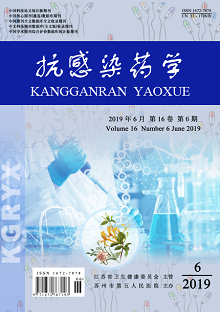CHEN Xiao-yu, XIAO Liang, JIN Gui-lin, GAO Xiu-xian
Objective: To analyze the distribution and resistance of pathogenic bacteria in cerebrospinal fluid(CSF) of clinical patients in a hospital during 2016 to 2017, and to provide a reference for the rational selection of antimicrobial agents in clinic. Methods: The data of culture results of common pathogenic bacteria in CSF of hospitalized patients from 2016 to 2017 were extracted to analyze the distribution of isolated common pathogenic bacteria and their resistance to antimicrobial agents. Results: In the culture results of common pathogenic bacteria, 95 strains of pathogenic bacteria were isolated, and the samples were mainly from neurosurgery (90.53%), neurology (4.21%) and ICU (2.11%). Among them, 67 strains of gram-positive bacteria accounted for 70.53%, and Staphylococcus epidermidis, hemolytic Staphylococcus and Saprococcus were the TOP 3 Gram-positive cocci, accounting for 18.95%, 16.84% and 10.53% respectively. Gram-negative bacteria accounted for 29.47% of the 27 strains, while Acinetobacter baumandii was the main isolated bacteria accounting for 10.53%, Baumann-calcium acetate acinetobacter complex accounted for 8.42%, and Enterobacter cloacae accounted for 3.16%. Gram-positive bacteria were 100% sensitive to nitrofurantoin, tikoranin and vancomycin. Except Enterococcus faecalis, other cocci such as Staphylococcus epidermidis were sensitive to furodidi acid. Except Enterococcus faecalis, Staphylococcus epidermidis were all sensitive to quinuptin/dafupretin.Acinetobacter baumannii, Acinetobacter Baumannii/calcium acetate complex, Klebsiella pneumoniae subspecies, Enterobacter cloacae, maltophilia oligomonas and Sarreia were highly resistant to amoxicillin-clavulinic acid and ampicillin but highly sensitive to polycolistin. Except for the highly sensitive slime Sarreia, Enterobacter cloacae was resistant to it (66.67%), while all the other bacteria were highly resistant to it. The first-generation cefazolin was highly resistant to all drugs except Bauman/calcium acetate Acinetobacter complex. Gram-negative and positive bacteria showed high resistance to other common drugs. Conclusion: The CSF of patients and the culture and isolation of pathogenic bacteria should be monitored and the drug resistance and the causes of changes should be understood, so as to ensure the prevention of the emergence of multi-drug resistance bacteria and the rational drug use.
